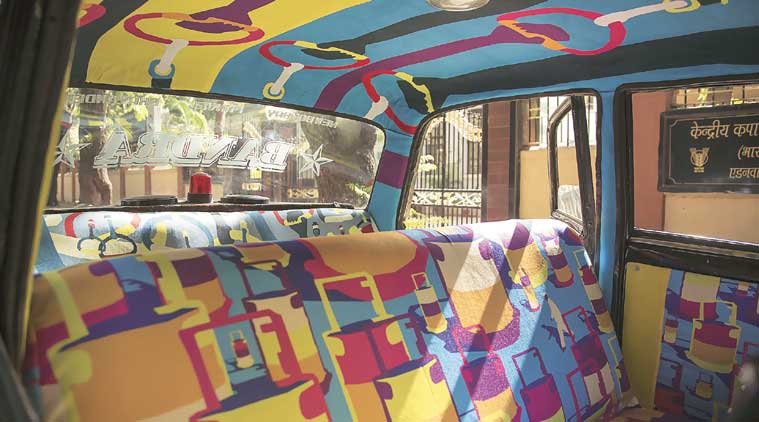Cab as canvas
A group of artists is infusing colour into the iconic black-and-yellow vehicles in Mumbai
 The dabbawalla print designed by Sanket Avlani.
The dabbawalla print designed by Sanket Avlani.
A common preoccupation one is confined to inside a taxi is to either roll down the window and gaze outside, or fiddle with your phone to pass time. Two years ago, in Mumbai, art director Sanket Avlani began taking photographs of taxis’ interiors. The designer with a keen eye for art wondered why the upholstery of most taxis was sombre and boring. “The vehicles have been plying for decades and are a big part of the city’s heritage. And yet, its design was a blind spot,” says Avlani, who is now based in London.
The designer began by posting pictures of the existing seat covers on his Tumblr account. “I realised that people don’t even bother to look at the insides of a taxi. I spoke to some of my artist-friends about adopting a textile approach and that is how Taxi Fabric was conceived,” he says. Today, Taxi Fabric has refurbished the interiors — from seat covers to doors to ceiling — of eight taxis in the city. From a print of dabbawallas, which Avlani designed himself, and artist Gaurav Ogale’s ‘cutting chai’-inspired prints to graphic designer Shweta Malhotra’s monkey-shaped balloons, the interiors are awash with bright colours and artwork that symbolise the city.
Getting the project together had its challenges, biggest of which was convincing the taxi owners. Avlani was a frequent user of cab services around Wadala, where he eventually joined hands with a few taxi owners. The artists also consulted with textile designers to source a fabric that would hold the colours well. After the designs were digitally printed on paper, printers in Kalachowki area were roped in to help transfer them on to a polyester-based fabric.
Besides adding to the taxi’s appeal, the initiative is an attempt to showcase the work of emerging and established Indian designers in public spaces. “When your work is presented in a form where scores of people are experiencing it every day, it can have an impact,” says Avlani.
While the first few taxis were self-funded, the team is currently running a crowd-sourced campaign on Kickstarter to raise funds for at least 30 more. They reached their goal of £8,000 a couple of weeks ago and stretched it by another £2,000. “The project proves that design has the power to create emotions and tell stories,” says Avlani.
shikha.kumar@expressindia.com
- 01
- 02
- 03
- 04
- 05



























